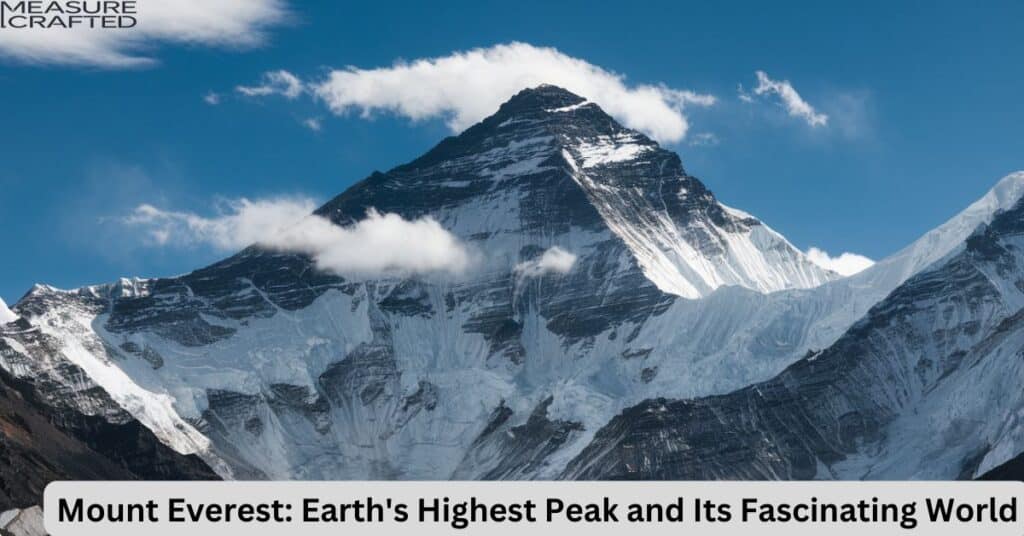Ever since the Mount Everest emerged as the highest point on Earth, it has captivated the interest of the people over the century. Due to its enormous height combined with magnificent beauty, it inspires adventurers to stretch their limits in pursuit of reaching its top.
Mount Everest is the topic of this blog. It contains a brief history of the mountain and the climbing routes, along with the dangerous death zone’s incidents that climbers face. Let’s dive deeper into the blog to understand the mountain’s history, geology, ecology, climbing routes, and the challenges faced by climbers on its icy slopes.
understanding Mount Everest
At a height of 8848.86 meters (29031.7 feet) above sea level, Mount Everest is the highest mountain in the world. The great pile is a symbol of praise for the natural world, the cultural implication, and human perseverance. Located in the Himalayas, it straddles the border between Nepal and Tibet.
It attracts climbers and adventurers from all over the world. Known as Sagarmatha in Nepal, meaning “Forehead of the Sky,” and Qomolangma in Tibetan, or “Holy Mother,” Everest carries names that reflect its importance to the people living in its shadow.
Excited about, How Big is Chicago? Explore the City’s Dimensions and Charm
The Name and Early Surveys of Mount Everest
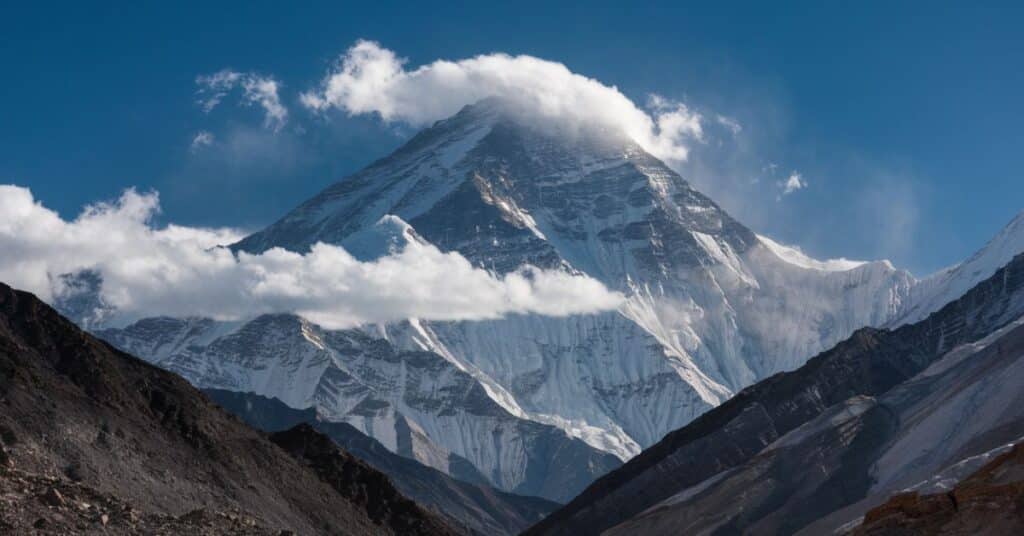
Below are the key insights into the legacy of Everest’s name and the historical surveys that measured its iconic height.
Naming the Highest Mountain
The world began calling the mountain “Mount Everest” in 1865, named after Sir George Everest, a British surveyor and geographer who served as the Surveyor General of India from 1830 to 1843.
Before this official designation, it was referred to as Peak XV in early British survey records during the Great Trigonometrical Survey of India. Interestingly, Sir George Everest himself initially opposed the naming, as he believed local names should take precedence.
Historical Surveys
The Great Trigonometric Survey of India in the 19th century first estimated Mount Everest’s height at 8,840 meters (29,002 feet) in 1856, marking a major milestone in geographical studies. Over time, further surveys refined this measurement.
In 2020, a joint effort by Nepal and China determined Everest’s official height as 8,848.86 meters (29,031.7 feet), using modern tools like satellite technology, GPS, and geoid approximation for greater accuracy.
Comparisons with Other Peaks
Mount Everest holds the title of the tallest mountain in the world when measured above sea level, but when measured from base to peak, Mauna Kea in Hawaii is the tallest.
Additionally, while Everest is renowned for its height, K2, the second highest peak, is often regarded as more challenging to climb due to its steep terrain and technical difficulties.
| Mountain | Height (meters) | Height (feet) | Notable Features |
|---|---|---|---|
| Mount Everest | 8,848.86 | 29,031.7 | Highest mountain above sea level |
| K2 | 8,611 | 28,251 | Known for extreme difficulty |
| Mauna Kea | 10,210 (from base) | 33,500 (from base) | Tallest from base to summit |
These comparisons highlight the unique features of each mountain, showcasing how measurements can vary depending on the reference point.
A Geological Masterpiece
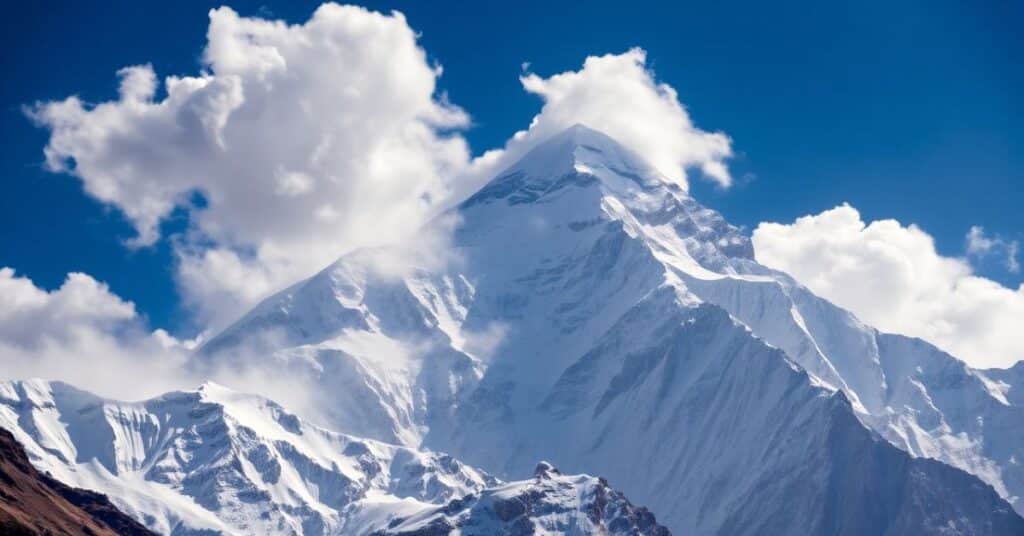
Here are the geological insights into the formation and features that make Mount Everest a true natural masterpiece.
Get more insights, Discover Florida: Dimensions, Fun Facts, and Everything
Formation and Features
Mount Everest’s formation began around 50 million years ago with the collision of the Indian and Eurasian tectonic plates. This powerful tectonic activity forced layers of limestone, shale, and metamorphic rocks upwards, giving rise to the towering peaks of the Himalayas, including Everest.
Over time, erosion, glaciers, and weathering shaped the mountain’s steep slopes and jagged features, contributing to its present day appearance.
Geological Highlights
Mount Everest is home to several distinct geological features, such as the Yellow Band, a layer of marble and semi schist, and the Hillary Step, a narrow rock face near the summit.
These formations offer scientists valuable insights into the Earth’s tectonic activity and its geological evolution. They also highlight the immense pressure and forces at work during the mountain’s formation.
Flora and Fauna on Mount Everest
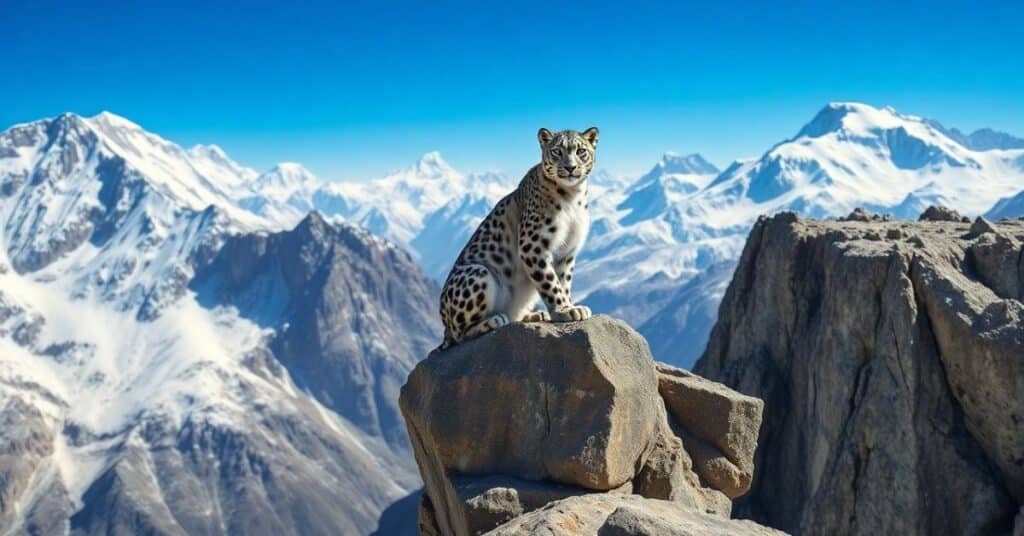
Despite its harsh climate, the region surrounding Mount Everest supports an impressive range of biodiversity. At lower altitudes, mosses, lichens, and alpine flowers thrive in the cooler environment.
Wildlife such as the Himalayan tahr, snow leopards, and red pandas roam the forests and valleys below the mountain. Additionally, birds like the bar headed goose are known to fly over Everest, surviving in oxygen levels that are often fatal to humans.
Climate and the Death Zone of Mount Everest
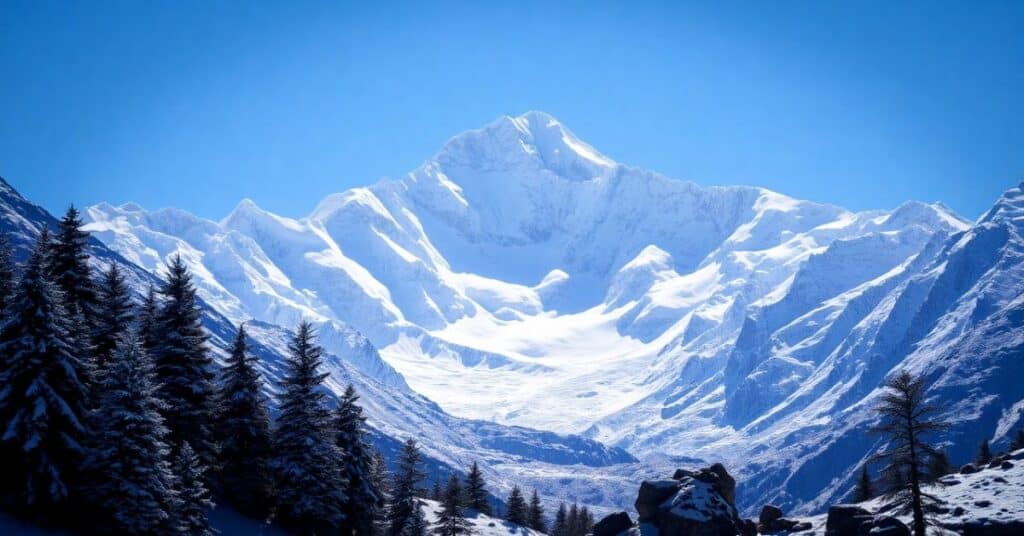
Below are the challenges climbers face due to Mount Everest’s extreme climate and the deadly risks of the death zone, compounded by climate change.
Want to explore furthur, Dead Sea Insights: Dimensions, History, and Surprising Facts
Harsh Conditions
Mount Everest’s climate is among the most extreme on Earth. In winter, temperatures can plummet to -60°C (-76°F), with fierce winds that make climbing nearly impossible.
Beyond 8,000 meters lies the notorious death zone, where oxygen levels are so low that the human body begins to deteriorate, putting climbers’ lives at great risk. These harsh conditions demand exceptional endurance and preparation from those who attempt to summit.
Impact of Climate Change
Altitude sickness, frostbite, and hypothermia are ongoing threats for climbers on Mount Everest. However, climate change has intensified these dangers, leading to the rapid shrinkage of glaciers and an increase in the frequency of avalanches.
These changes not only affect the environment but also make climbing even more treacherous, adding new challenges to an already perilous ascent.
Climbing History
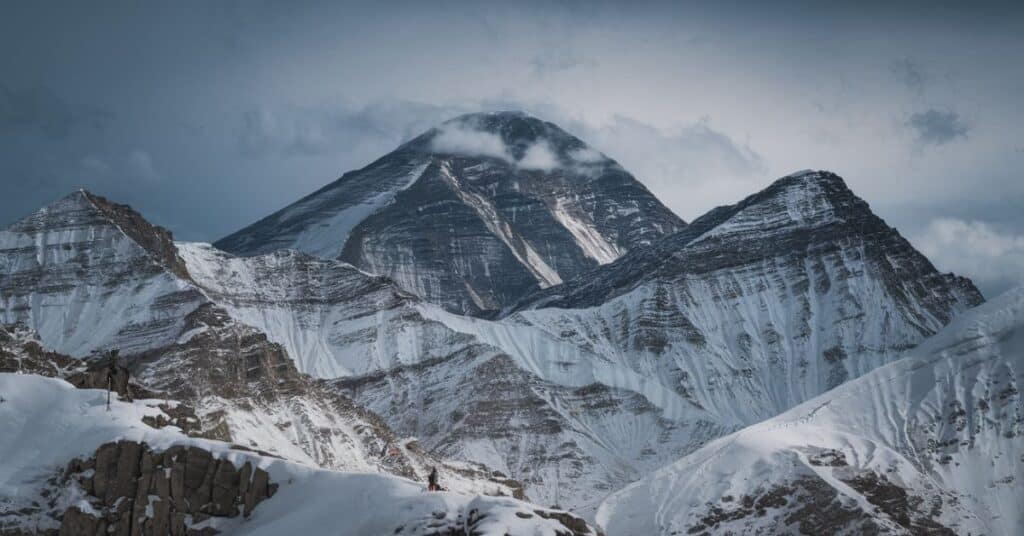
Here are the key moments in Everest’s climbing history, highlighting both the triumphs of human achievement and the tragedies that serve as cautionary tales.
Early Attempts
Mount Everest has been the site of both remarkable human achievements and tragic failures. In the 1920s, early expeditions aimed to conquer the peak, with one of the most infamous being the 1924 attempt by George Mallory and Andrew Irvine.
The two climbers disappeared near the summit, and their fate remains one of the greatest mysteries in mountaineering history. Their legacy continues to spark debate, with some wondering whether they reached the summit before they perished.
Historic First Ascent
In 1953, Sir Edmund Hillary of New Zealand and Tenzing Norgay, a mountain guides of Nepal, made history by becoming the first confirmed climbers to reach the summit of Mount Everest.
Their successful ascent not only marked a monumental achievement in mountaineering but also signified a breakthrough in human endurance and determination. This momentous event remains a symbol of international collaboration, courage, and the triumph of human spirit.
Notable Disasters
Mount Everest has witnessed several tragic events that have underscored the inherent dangers of climbing the highest peak in the world. The 1996 Mount Everest disaster, caused by a fierce storm, claimed the lives of 8 climbers and was later immortalized in Jon Krakauer’s book, Into Thin Air.
Other tragedies include the 2014 avalanche, which took the lives of 16 mountain guides, and the devastating 2015 earthquake that triggered an avalanche, killing at least 22 people at Everest Base Camp. These events serve as grim reminders of the mountain’s unpredictable and deadly nature.
Interested about, How Long is 999 Seconds? Practical Insights and Fun Facts
Climbing Routes and Seasons of Mount Everest
Below are the popular climbing routes and seasonal patterns for summiting Mount Everest, outlining the optimal conditions and challenges climbers face.
Popular Routes
Most climbers ascend Everest during spring or autumn when weather conditions are relatively stable. The two primary routes are the Southeast Ridge from Nepal and the North Ridge from Tibet.
The Southeast Ridge is considered the standard route due to its relatively easier access and logistical support. The North Ridge, while less crowded, is steeper and more technically demanding.
Seasonal Patterns
The spring season is the most favored time for climbing Mount Everest, offering climbers clear skies, relatively warmer temperatures, and optimal conditions for summiting. During this period, the weather is more predictable, which makes it ideal for expeditions.
Autumn, while offering another opportunity for climbs, sees fewer climbers due to shorter days, colder temperatures, and a higher likelihood of storms, making it a less popular choice compared to spring.
Environmental Challenges on mount Everest
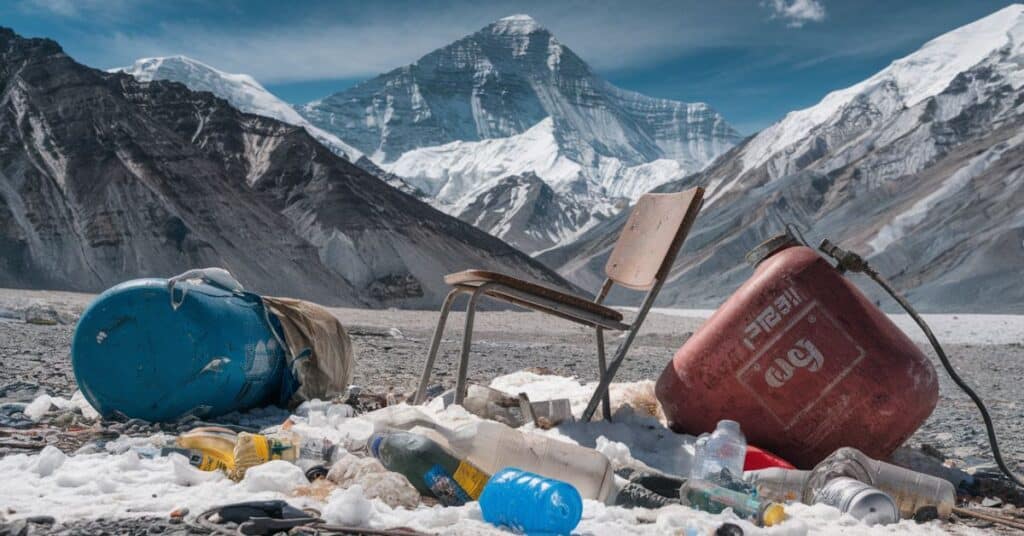
Mount Everest’s growing popularity among climbers has resulted in significant environmental challenges. With the rise in commercial expeditions, the once pristine landscape is now littered with trash, abandoned climbing gear, and human waste. The waste, much of it left behind by climbers in the rush to reach the summit.
Efforts by local governments, climbing organizations, and non profits have ramped up in recent years to address this issue. Cleanup operations are conducted regularly, and stricter regulations are being enforced to limit waste. However, the sheer scale of the problem presents an ongoing challenge for both the climbers and the authorities.
Aviation and Extreme Sports
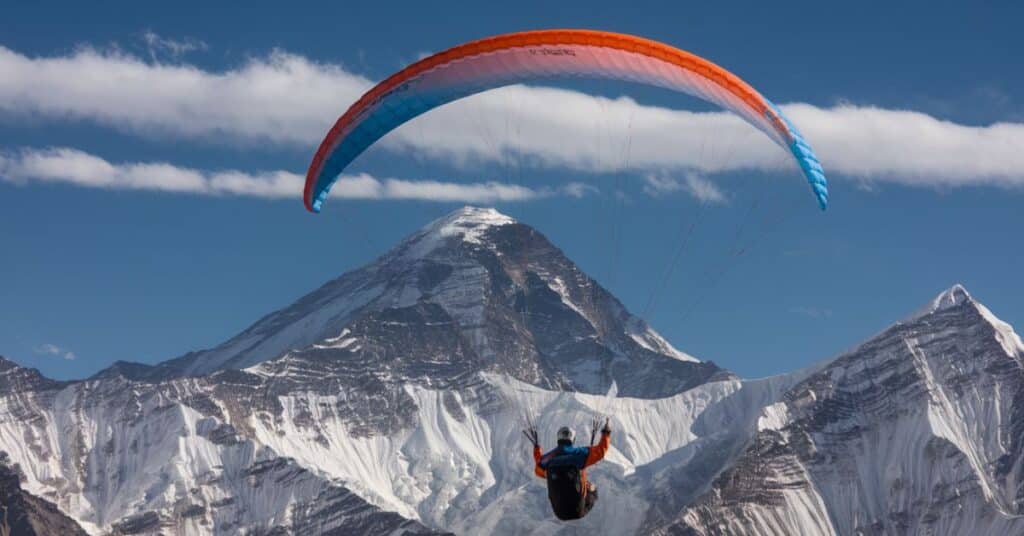
The skies above Mount Everest have been the backdrop for several groundbreaking feats. In 1933, a plane flew over the summit for the first time, marking a milestone in aviation history. 1988 witnessed the first successful climb and glide expedition, where adventurers scaled the mountain and then glided down using hang gliders.
Over the years, Mount Everest has also seen extreme sports like paragliding, hot air ballooning, and even helicopter rescues. These daring activities reflect humanity’s unyielding desire to conquer the world’s highest peak from every possible angle.
Read more, How Long is 20 Feet? 11 Common Things That Are 20ft Long
A Sacred Peak
For the mountain guide and Tibetan communities, Mount Everest, or Qomolangma, holds deep spiritual significance. It is not merely a physical challenge but a sacred entity that commands respect. Before embarking on expeditions, climbers often participate in traditional ceremonies, offering prayers and seeking blessings from the mountain.
The spiritual connection to Everest is so strong that climbers are encouraged to respect its essence, maintaining humility and awareness of the mountain’s power. This sacred relationship between the people and the mountain adds an emotional and cultural layer to the already challenging ascent.
Conclusion
Mount Everest stands as a testament to human determination, drawing adventurers to its towering peak despite the immense risks. Its breathtaking beauty and challenges continue to inspire, leaving an indelible mark on the hearts of those who seek to conquer it.
Yet, as climbers face the mountain’s dangers, we are reminded of the fragile ecosystem that surrounds it. Mount Everest is not only a triumph of human endurance but also a call to protect the natural world that makes it so extraordinary.
FAQs about Mount Everest
1. What is the death rate on Everest?
The death rate on Mount Everest is around 3%. Over 300 climbers have lost their lives since expeditions began, making it a perilous undertaking despite its allure.
2. What is the most dangerous part of the climb?
The most dangerous part of the climb is the “death zone,” located above 8,000 meters (26,247 feet). In this zone, oxygen levels are dangerously low, and extreme weather conditions create life-threatening challenges for climbers.
3. How many climbers attempt Everest annually?
Each year, approximately 800 to 1,000 climbers attempt to reach the summit of Everest. While this number has increased in recent years, it remains a challenging and hazardous feat, especially given the mountain’s environmental and technical difficulties.
Mount Everest Quiz
1. What is the height of Mount Everest?
a) 8,848 meters
b) 8,800 meters
c) 9,000 meters
d) 7,850 meters
2. Which two climbers were the first to reach the summit of Mount Everest?
a) George Mallory and Andrew Irvine
b) Sir Edmund Hillary and Tenzing Norgay
c) Reinhold Messner and Peter Habeler
d) Jon Krakauer and Doug Hansen
3. What is the name of the most popular climbing route on Mount Everest?
a) North Ridge
b) West Ridge
c) Southeast Ridge
d) South Col
4. What is the “death zone” on Mount Everest?
a) The summit
b) The area above 6,000 meters
c) The area above 8,000 meters
d) The base camp
5. Which year was Mount Everest officially named after Sir George Everest?
a) 1856
b) 1865
c) 1953
d) 2020
Answers:
- a) 8,848 meters
- b) Sir Edmund Hillary and Tenzing Norgay
- c) Southeast Ridge
- c) The area above 8,000 meters
- b) 1865
Dive deeper into the topic, How far away is the Moon?

